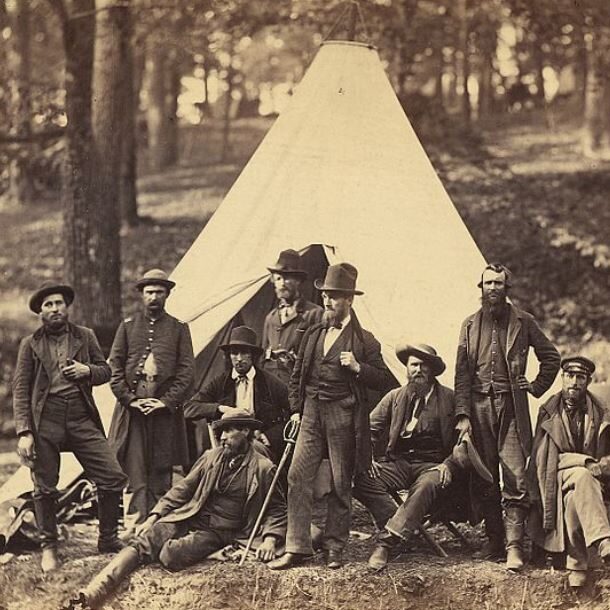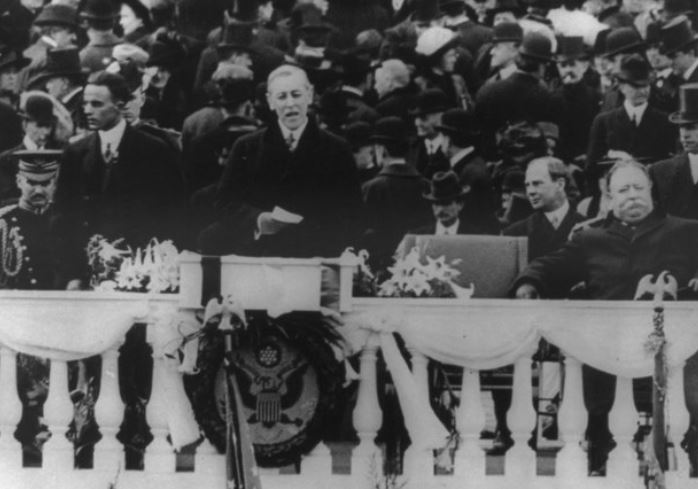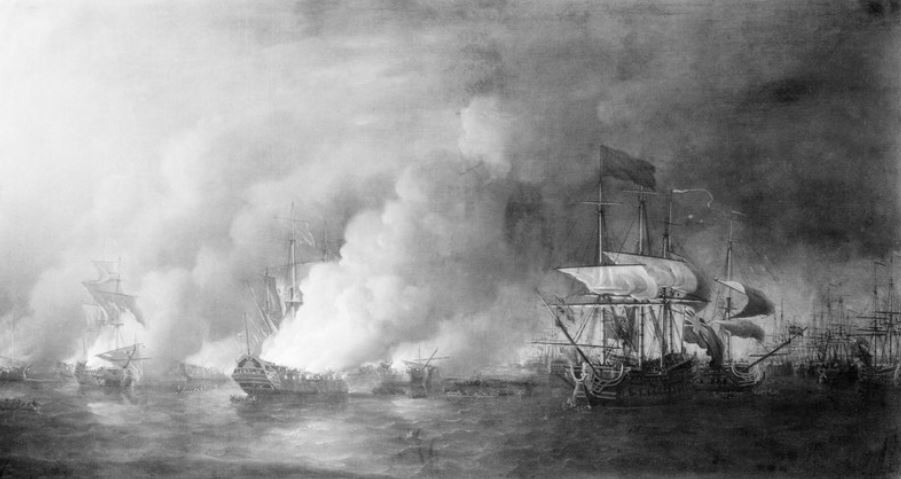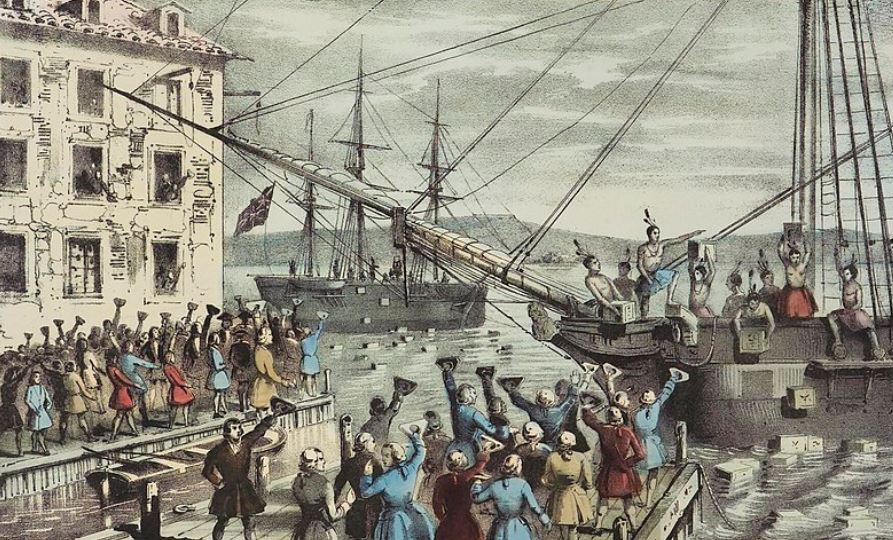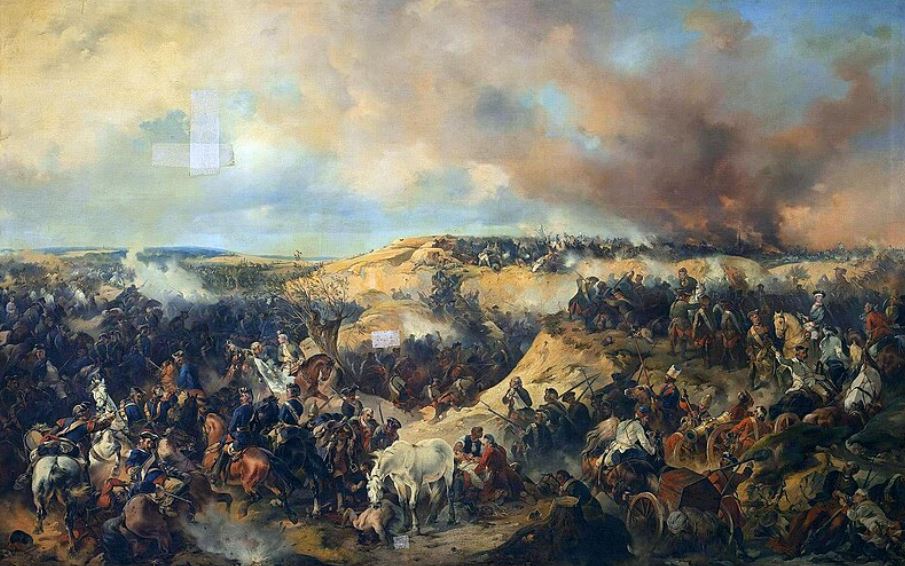- The Importance of Maryland during the Civil War
- 1. Battle of Antietam, Maryland
- 2. Battle of Harpers Ferry
- 3. Battle of Monocacy, Maryland
- 4. Battle of South Mountain, Maryland
- 5. Battle of Williamsport, Maryland
- 6. Battle of Boonsboro, Maryland
- 7. Battle of Funkstown, Maryland
- 8. Battle of Crampton's Gap, Maryland
- 9. Battle of Hancock, Maryland
- 10. Battle of Folck's Mill, Maryland
- Further Reading
The Importance of Maryland during the Civil War
As a border state between the Union and Confederacy, Maryland held great strategic importance during the Civil War.
Although it was a slave state, Maryland remained in the Union. Had Maryland seceded, Washington D.C. would have been completely surrounded by Confederate territory.
This would have made defending the Union capital much more difficult.
Several major Civil War battles were fought in Maryland, including Antietam, which was the bloodiest single day battle in American history.
Maryland provided troops to both sides, though more sided with the Union.
The state was also an important source of supplies and transportation routes for the Union army.
Lincoln’s suspension of habeas corpus in Maryland early in the war allowed him to arrest Confederate sympathizers and maintain order.
Maryland’s decision to stay in the Union provided a vital strategic advantage that assisted the North’s victory.
1. Battle of Antietam, Maryland
- Date: September 17, 1862
- Casualties: Approximately 22,720 (Union: 12,410, including 2,100 killed; Confederate: 10,310, including 1,500 killed)
- Outcome: Inconclusive, but strategically a Union victory. It halted General Robert E. Lee’s first invasion of the North.
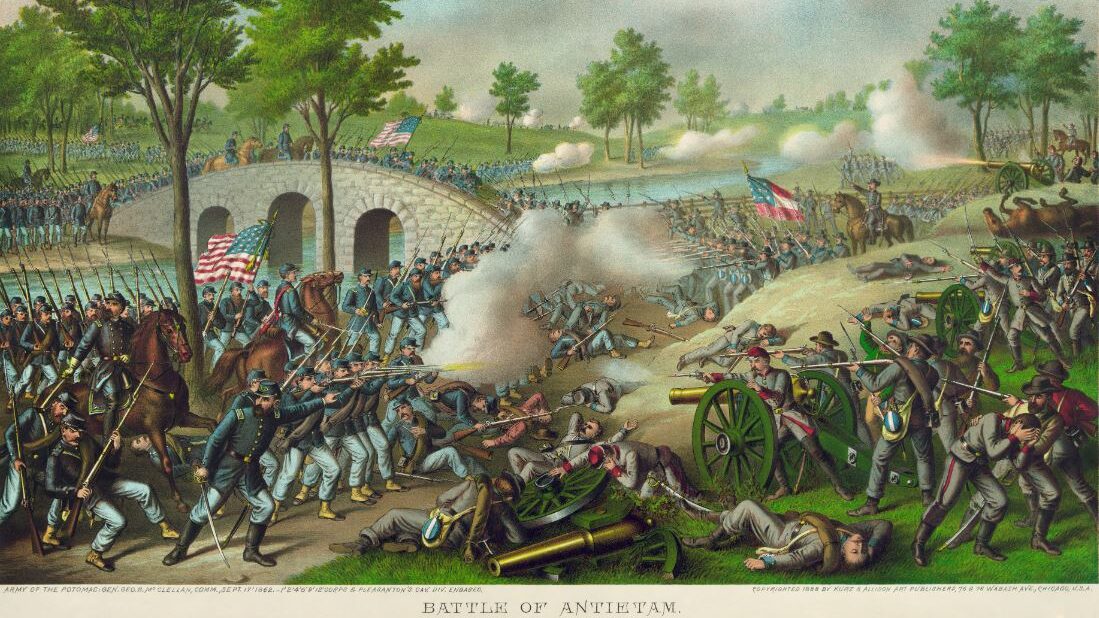
The Battle of Antietam, also known as the Battle of Sharpsburg, was a pivotal battle of the American Civil War, fought on September 17, 1862, near Sharpsburg, Maryland. It was the bloodiest single-day battle in American history, with over 23,000 casualties.
The battle began when Union General George B. McClellan’s Army of the Potomac crossed the Potomac River into Maryland in pursuit of Confederate General Robert E. Lee’s Army of Northern Virginia. Lee had invaded Maryland in an attempt to draw McClellan away from Washington, D.C., and to encourage Maryland to secede from the Union.
The two armies clashed on September 17th in a series of bloody and inconclusive attacks and counterattacks. The fighting raged for over 12 hours, and by the end of the day, both sides were exhausted. The Union had suffered over 12,000 casualties, while the Confederates had lost over 10,000.
The Battle of Antietam was a tactical draw, but it had a significant impact on the course of the war. The Union victory prevented Lee from invading the North and encouraged President Abraham Lincoln to issue the Emancipation Proclamation, which freed all slaves in Confederate territory. The battle also marked the end of Lee’s invasion of the North and forced him to retreat back into Virginia.
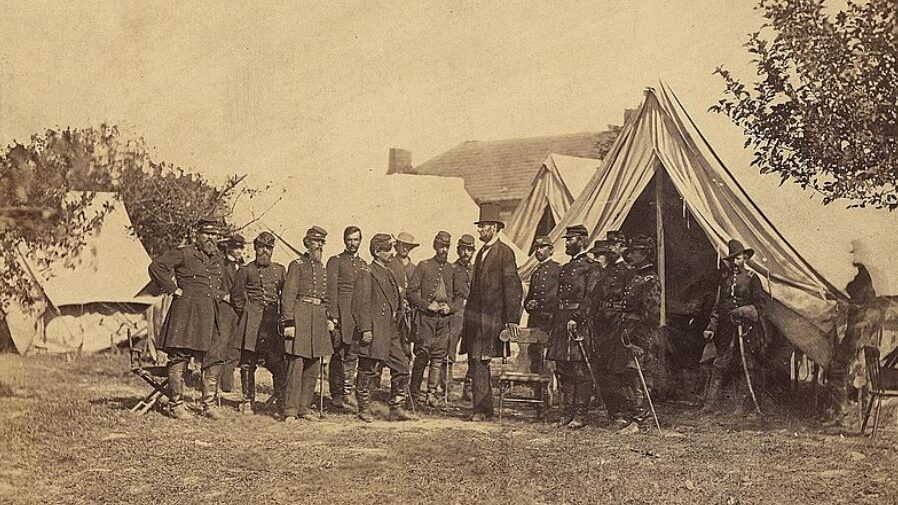
The Battle of Antietam was a turning point in the Civil War. It marked the end of the Confederate Army’s hopes of winning a decisive victory in the East and paved the way for the Union’s eventual victory in the war.
If you are planning to the Battle of Antietam site, please visit the National Park Service for details.
2. Battle of Harpers Ferry
- Date: September 12-15, 1862
- Casualties: Approximately 12,920 (Union: 12,520; 44 killed but 12,419 captured; Confederate: 400 and 39 killed)
- Outcome: Confederate victory. Union forces under Colonel Dixon Miles surrendered after being surrounded and outnumbered.
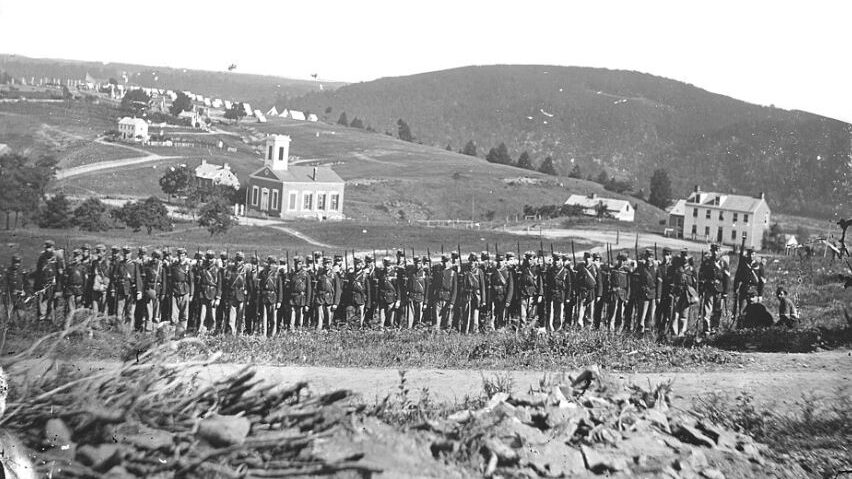
In September 1862, the town of Harpers Ferry, Virginia (now West Virginia) was the site of a major battle during the Maryland Campaign of the Civil War.
Harpers Ferry, a small town with a historic Federal arsenal, was strategically vital due to its location at the confluence of the Potomac and Shenandoah Rivers.
Confederates under the command of General Thomas “Stonewall” Jackson decisively defeated Union forces and delivered a humiliating blow.
The Union garrison at Harpers Ferry was led by Colonel Dixon S. Miles. Numbering around 12,500 men, they occupied strong defensive positions and had access to ample weapons and supplies. However, Miles was not an effective leader and had failed to adequately prepare his men for an attack.
The Confederates, led by Jackson, descended on Harpers Ferry from multiple directions, utilizing the surrounding Maryland Heights to their advantage. Starting on September 13th, they subjected the town to a punishing artillery bombardment. The assaults continued for two days until Miles was mortally wounded on September 15th. Under inept leadership and severely outnumbered, the Union soldiers put up minimal resistance before surrendering.
Jackson had won an enormous victory. The largest surrender of U.S. troops in the Civil War netted the Confederates over 12,000 prisoners as well as the substantial weapons and supplies stockpile.
Confederate forces feasted on Union supplies, and Jackson quickly moved to join the Battle of Antietam.
The battle dealt a stinging blow to Union forces and elevated Jackson to legendary status in the South. Though the invasion of Maryland would ultimately fail, Jackson’s victory at Harpers Ferry remains one of the most dramatic and decisive battles of the Civil War.
For more details about visiting Harpers Ferry, view here.
3. Battle of Monocacy, Maryland
- Date: July 9, 1864
- Casualties: Approximately 1,194 (Union: 1,294; Confederate: 900)
- Outcome: Confederate victory. Although Union forces were defeated, they delayed General Jubal Early’s advance on Washington, D.C., giving Union reinforcements time to arrive.
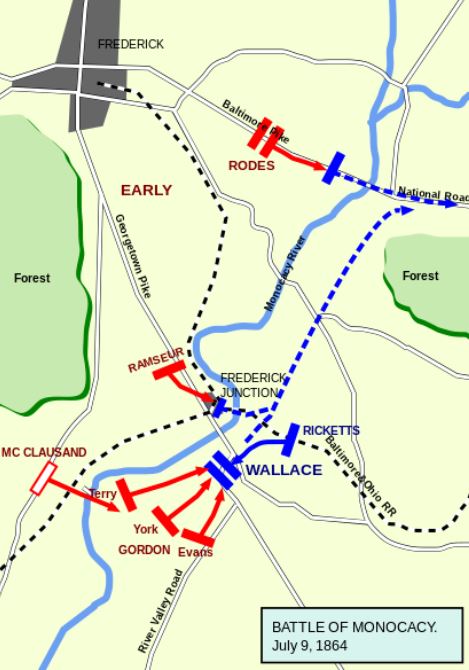
In July 1864, a pivotal yet often-overlooked battle was fought near Frederick, Maryland.
On the banks of the Monocacy River, a vastly outnumbered Union force under Major General Lew Wallace managed to delay Confederate General Jubal Early’s advance toward Washington D.C. This battle would become known as “The Battle That Saved Washington.”
The stakes were high. Early’s raid through the Shenandoah Valley and into Maryland was aimed at diverting Union forces from the Siege of Petersburg and relieving pressure on General Robert E. Lee’s army.
Catching wind of the audacious Confederate plan, General Ulysses S. Grant ordered Wallace and his 5,800 men to defend Monocacy Junction and its vital railroad bridge at all costs.
On July 9th, battle commenced with Early’s 14,000 seasoned troops charging the Union line near Worthington Farm. Despite being outnumbered over 2 to 1, Wallace’s men resisted the flanking maneuvers and repelled repeated Confederate attacks. The Union General had managed to secure strong defensive positions on the Monocacy’s bluffs and bridge crossings.
For over 6 hours, relentless combat raged across the river, through the Worthington Farm, and at the Thomas House. Though eventually forced to retreat, Wallace’s valiant stand cost Early over 900 casualties and stalled the Confederate advance an entire day. Those 24 precious hours allowed Grant to rush reinforcements to protect Washington.
Despite being defeated, Wallace emerged from Monocacy as a hero.
His tactical prowess and leadership in the face of overwhelming odds were praised by Grant himself. The extra day afforded by the Union’s stubborn resistance likely saved Washington D.C. from capture.
While a Confederate victory, Monocacy proved the old adage that sometimes avoiding defeat is as valuable as victory itself.
The Battle of Monocacy deserves recognition as one of the most strategically important conflicts of the Civil War. Though often overlooked, Monocacy was indeed “The Battle That Saved Washington.”
If you are planning to the Battle of Antietam site, please visit the National Park Service for details.
4. Battle of South Mountain, Maryland
- Date: September 14, 1862
- Casualties: Approximately 5,010 (Union: 2,325; Confederate: 2,685)
- Outcome: Union victory. The battle was a series of three engagements that allowed the Union Army to seize control of key mountain passes.
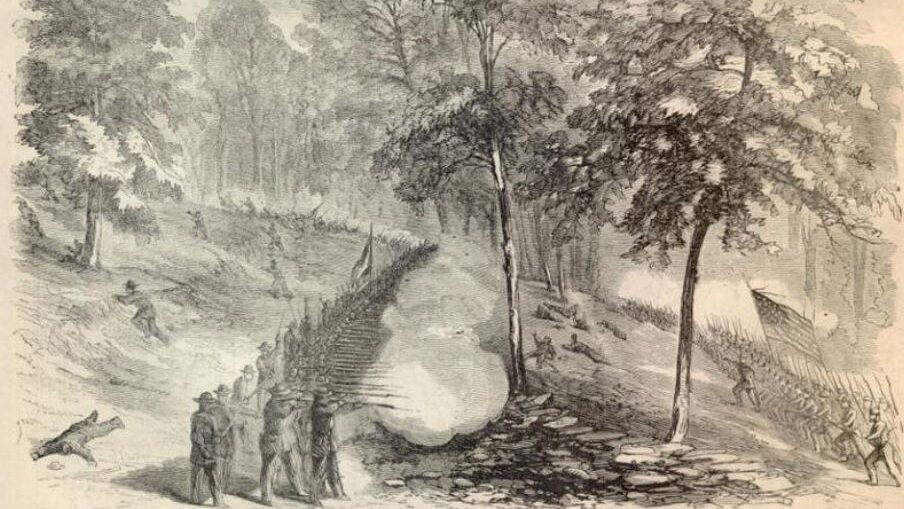
As Confederate General Robert E. Lee pushed north into Maryland in September 1862, a series of fierce clashes erupted on the slopes of South Mountain.
These pivotal battles on September 14th set the stage for the bloodiest single-day battle of the Civil War at Antietam a few days later.
Determined to crush Lee’s invasion, Union General George B. McClellan launched attacks against three mountain passes – Fox’s Gap, Frostown Gap, and Turner’s Gap. Maneuvering three wings of his Army of the Potomac, McClellan sought to punch through the passes defended by Confederate General D.H. Hill.
The fighting started early in the morning as Union forces marched westward.
Some of the most intense combat occurred at Fox’s Gap, where both sides endured heavy volleys of musket and artillery fire. Though suffering staggering casualties, Union troops finally secured Fox’s and Turner’s Gaps by dusk.
Despite McClellan’s numerical superiority, the Confederate defenders managed to hold their ground for most of the day before retreating. Their stand significantly slowed the Union pursuers, allowing Lee precious time to concentrate his divided forces further north at Sharpsburg.
While a Union victory, McClellan’s tentative leadership failed to fully capitalize on the hard-fought victory at South Mountain.
His excessive caution following the battle enraged President Lincoln and caused missed opportunities to potentially cripple Lee. Within three days, both armies would collide again in the cornfields and woodlots along Antietam Creek.
With over 5,000 casualties, the Battle of South Mountain marked the beginning of the horrific fighting in Maryland. The gallant stands by both Confederates and Federals on the mountain setbacks foreshadowed the terrible carnage to come at Antietam.
If you are planning to the Battle of Antietam site, please view here for details.
5. Battle of Williamsport, Maryland
- Date: July 6-16, 1863
- Casualties: Approximately 1,760
- Outcome: Inconclusive. It was part of the larger Gettysburg Campaign and saw limited engagement, with neither side gaining a significant advantage.
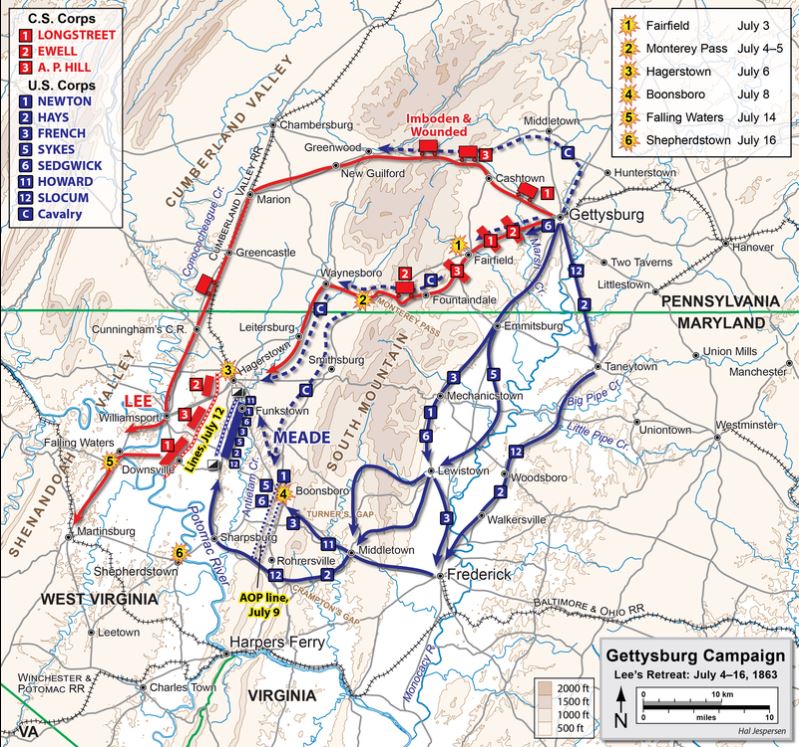
In the aftermath of their defeat at Gettysburg, Robert E. Lee’s Army of Northern Virginia fled southwest towards the Potomac River, desperate to escape back to Virginia. The swollen river proved a daunting obstacle, buying the pursuing Union Army precious time to catch up. From July 6-16, 1863, the pivotal Battle of Williamsport erupted as Federals sought to smash the vulnerable Confederates.
Trapped against the river near Williamsport, Maryland, Lee entrenched his lines and awaited pontoon bridges for crossing. Skirmishing flared up on July 12 as Union cavalry probed the Confederate positions.
Despite holding a numerical advantage, Federal commander George Meade hesitated to launch a full assault. This may have been his best chance to destroy Lee’s army.
Frantic Confederate engineers and troops managed to construct a new pontoon bridge on July 13, allowing Confederates to finally cross the Potomac to safety starting that night.
Fierce rearguard clashes erupted at Hagerstown and Falling Waters on July 14 as Federals tried to disrupt the escape. Over 500 Confederate were captured in a cavalry melee near Falling Waters.
Though Meade missed an opportunity to decisively defeat the Confederates, the Battle of Williamsport at least damaged Lee’s army and hindered their retreat. Lee would limp back to Virginia, forced to campaign defensively after Gettysburg.
While a small engagement, the actions at Williamsport capped the pivotal Gettysburg Campaign that marked the turning point of the Civil War.
6. Battle of Boonsboro, Maryland
- Date: July 8, 1863
- Casualties: Approximately 100
- Outcome: Confederate victory. It was part of the retreat following the Battle of Gettysburg.
The Battle of Boonsboro, fought on July 8, 1863, was a vital rearguard action that allowed Robert E. Lee’s Confederate Army to retreat after its defeat at Gettysburg. With Union cavalry in pursuit, Major General J.E.B. Stuart used his cavalry to delay the Federals near Boonsboro, Maryland.
Outnumbered, Stuart’s troopers clashed with Union brigades under John Buford and Judson Kilpatrick along the National Road near Beaver Creek Bridge. Vicious fighting erupted with cavalry from both sides dismounting and engaging at close quarters after an initial Confederate push. By afternoon, Kilpatrick’s ammunition was running low and his division withdrew under pressure.
Stuart broke off the action that evening upon the arrival of Union infantry. Despite lighter casualties of 60 for the Confederates and 90 for the Union, Boonsboro was a tactical victory for Stuart. His troopers fended off the Union cavalry pursuit, enabling Lee’s army to safely retreat toward Virginia.
Boonsboro demonstrated Stuart’s skill at rearguard fighting and ensured that Lee would not be cut off by cavalry before recrossing the Potomac River. The Confederates lived to fight another day thanks to Stuart’s leadership and tenacity.
7. Battle of Funkstown, Maryland
- Date: July 10, 1863
- Casualties: Approximately 500
- Outcome: Inconclusive. It was a minor engagement during the Confederate retreat from Gettysburg.
The Battle of Funkstown, fought on July 10, 1863, was an important part of the Confederate withdrawal after their major defeat at Gettysburg.
General Robert E. Lee aimed to retreat with his Army of Northern Virginia back to the safety of Virginia, but first had to buy time to get his forces across the Potomac River.
To protect the retreat, General J.E.B. Stuart’s Confederate cavalry took up strong defensive positions with high ground and stone walls just south of Funkstown, Maryland. On the morning of July 10th, Union cavalry under General John Buford attacked Stuart’s line but made little progress against the determined defense.
By afternoon, Buford’s ammunition was running low when Union infantry arrived to relaunch the assault.
Heavy fighting raged as the Union troops tried unsuccessfully to break through the center of the Confederate line.
As evening approached, the Union withdrew having failed to budge Stuart’s cavalry, despite inflicting 350 casualties. The Confederates suffered just 479 casualties in exchange for enabling Lee’s army to escape across the Potomac after Gettysburg.
While a small engagement compared to Gettysburg, the Battle of Funkstown was a tactical victory for Stuart’s rear guard, allowing the Confederates to safely retreat. The Union’s failure to destroy Lee’s army at Funkstown permitted the war to continue for two more years.
8. Battle of Crampton’s Gap, Maryland
- Date: September 14, 1862
- Casualties: Approximately 1,000 (Union: 440; Confederate: 560)
- Outcome: Union victory. It was part of the Battle of South Mountain and allowed Union forces to secure a vital mountain pass.
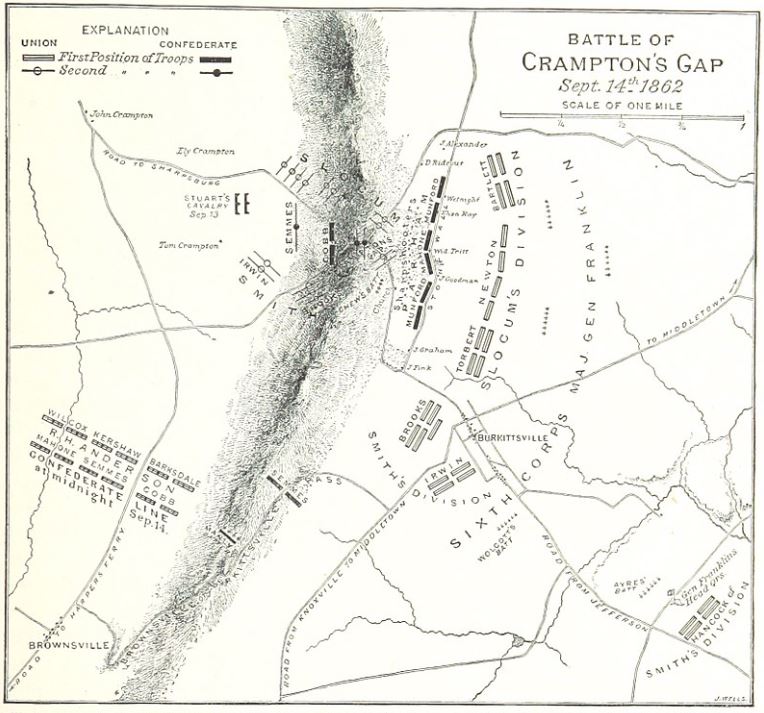
On September 14, 1862, a pivotal clash unfolded at Crampton’s Gap in Maryland’s South Mountain range. Here, Union forces under General William Franklin sought to smash through the mountain pass and strike the rear of Confederates laying siege to Harper’s Ferry.
A small confederate force used the rugged terrain to their advantage, mounting a stout resistance and stalling the Federals for hours. But late in the day, Franklin’s VI Corps finally overpowered the outnumbered Confederates under Howell Cobb after bloody, uphill fighting.
The Union soldiers drove the Confederates from the summit, seeming to have achieved a dramatic breakthrough. However, their tardy arrival and Franklin’s hesitance to press the attack on Harper’s Ferry that night allowed the bulk of the Confederate army to escape.
A golden opportunity to cripple the invaders had been lost. Within days, the armies would collide in the cornfields of Antietam in the bloodiest single day of combat in American history.
Though a tactical win, the Battle of Crampton’s Gap proved a strategic setback for the Federals. The Confederates had once again used the terrain and stubborn defense to offset their disadvantages in numbers. Franklin’s delay in advancing squandered the gains made by courageous troops who finally cracked the mountain pass after hours of intense combat.
The Confederates could rightfully claim victory in disrupting Union plans through their sacrificial stand. Crampton’s Gap showcased their audacity and skill at leveraging ground and time. Ultimately, their delaying actions here allowed Confederates forces to fight another day, at mighty Antietam.
9. Battle of Hancock, Maryland
- Date: January 5-6, 1862
- Casualties: Less than 50
- Outcome: Union victory. It was a part of the larger Romney Expedition during the early stages of the war.
The Romney Expedition was a Confederate campaign in early 1862 led by Major General Thomas “Stonewall” Jackson. Its aims were to disrupt the Baltimore & Ohio Railroad and threaten Union forces in western Virginia.
The movement began on January 1, 1862 with Jackson’s troops marching from Winchester, Virginia in cold winter conditions. On January 3, they reached Bath, Virginia and skirmished with Union forces but failed to capture the town.
On January 4, Jackson’s artillery bombarded the town of Hancock, Maryland across the Potomac River in an attempt to drive out the Union troops stationed there under Brigadier General Frederick Lander. Artillery fire was exchanged the next day between the opposing forces with little damage.
Jackson sought to cross the Potomac at Hancock but faced stiff resistance. After failing to take the town, the Confederates withdrew on January 7 due to harsh weather and logistical issues. Jackson then refocused his efforts on the town of Romney, Virginia which was evacuated by Union forces on January 15.
The expedition demonstrated Jackson’s aggressiveness but disputes between Confederate leaders over its conduct led to fallout after the campaign ended. Overall, the Romney Expedition failed to achieve its key strategic objectives in western Virginia and Maryland.
10. Battle of Folck’s Mill, Maryland
- Date: August 1, 1864
- Casualties: Approximately 80
- Outcome: Inconclusive. It was a minor engagement during the Maryland Campaign.
The Battle of Folck’s Mill in August 1864 was a pivotal cavalry clash during Confederate General John McCausland’s raid on Cumberland, Maryland. After burning Chambersburg, Pennsylvania, McCausland headed for Cumberland seeking another ransom. At Folck’s Mill east of the city, McCausland found his cavalry confronted by Union General Benjamin Kelley’s forces.
Artillery fire was exchanged but McCausland ultimately declined to directly assault the defended town. The next day, McCausland tried crossing the Potomac into West Virginia but found his retreat blocked by Colonel Israel Stough’s troops. After initial back-and-forth fighting, McCausland managed to cross the river and withdraw.
Though a tactical draw, Folck’s Mill represented a strategic victory for the Union cavalry. Kelley and Stough’s actions staved off Confederate ransom demands and prevented the destruction of Cumberland. The Union troopers displayed grit and determination in resisting the Rebel raiders. This staunch defense saved Cumberland and forced McCausland to abort his raid into West Virginia. The Battle of Folck’s Mill showcased Union cavalry competence against Confederate raiders in the war’s late stages.
Further Reading
If you enjoyed this article, you may be interested to read about other American Civil War events, such as battles in North Carolina or more general American history.

